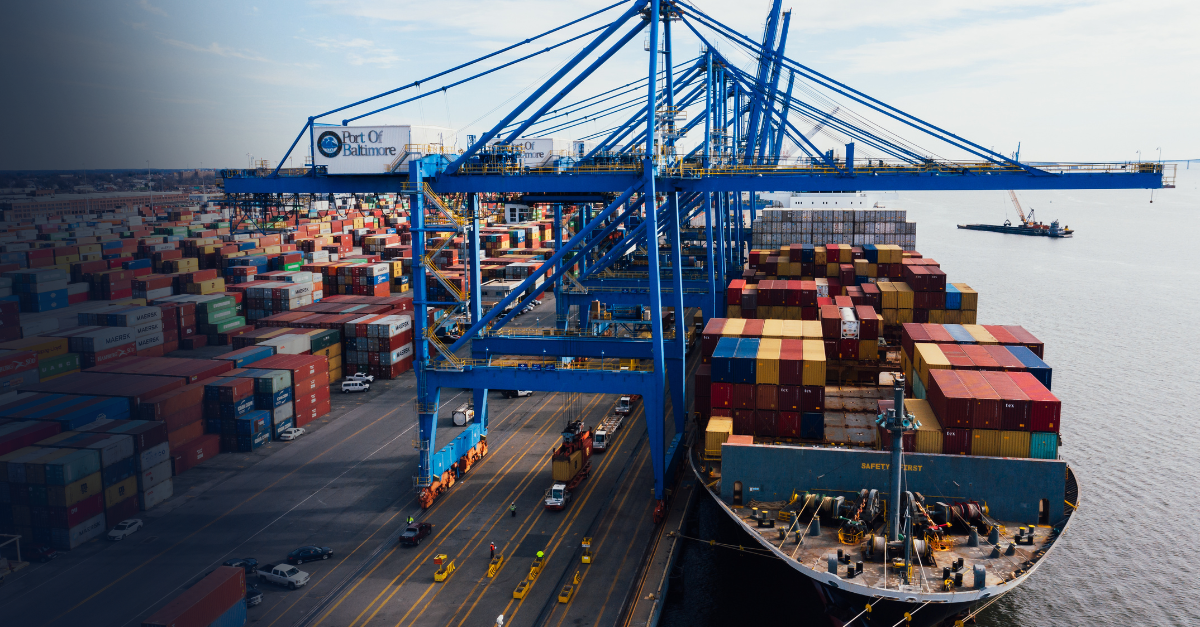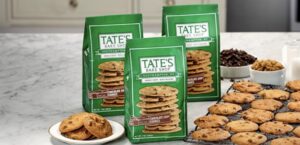Chips, drugs, and steel — how to prepare for Trump tariffs

Key takeaways
- Products of China are subject to a 20% punitive tariff, plus a 125% reciprocal tariff, plus the tariffs in effect prior to 2025 (7.5% to 100%).
- Products of Canada not covered by the USMCA are subject to a 25% tariff (10% for energy and potash).
- Products of Mexico not covered by the USMCA are subject to a 25% tariff.
- Other countries are subject to a 10% reciprocal tariff.
- Countries that buy oil or gas from Venezuela are subject to a 25% tariff.
- Steel and aluminum imports from various countries are subject to a 25% tariff.
- Automobiles and auto parts not made in the U.S. are subject to a 25% tariff; USMCA-compliant parts remain tariff free.
- Consumer electronics are exempt from most reciprocal tariffs.
- Duty-free de minimis for China and Hong Kong ends May 2.
- Products of the United States are subject to increased tariffs in Canada and China; the European Union suspended its countermeasures until July 14.
On April 15, the White House noted that tariffs for some products of China can be as high as 245%.
To fully understand the latest tariff policy changes, you need to know how we got to this point. Read on for a recap of the 2025 trade war to date, or jump down to learn more about the tariff changes.
Tariff Timeline
On January 31, White House Press Secretary Karoline Leavitt confirmed that President Trump would implement new 25% tariffs on Mexico, 25% tariffs on Canada, and 10% tariffs on China starting February 1, 2025.
On February 1, we learned the new tariffs would take effect on February 4.
On February 3, the tariffs on Canada and Mexico were paused.
On February 10, President Trump issued a proclamation imposing a 25% ad valorem tariff on steel and aluminum articles from most countries effective March 12, 2025.
On February 13, President Trump signed a presidential memorandum ordering his administration to pursue reciprocal tariffs on U.S. trading partners.
On February 25, United States Customs and Border Protection (CBP) announced that it will “reject entry summaries that are not in compliance with the requirements” set forth in the February 1 executive order, which imposed new duties on China.
On February 26, President Trump told the press he was “not stopping the tariffs” on Canada and Mexico. He said the tariffs would take effect April 2, 2025, “not all of them but a lot of them.”
On February 27, the president announced via Truth Social that “the proposed tariffs scheduled to go into effect on March 4 will, indeed, go into effect as scheduled.” He added, “China will likewise be charged an additional 10% tariff on that date.”
Members of the administration indicated that the April date mentioned by President Trump on February 26 referred to reciprocal tariffs, not the 25% Canada and Mexico tariffs. White House economic advisor Kevin Hassett reportedly said Trump would make a final decision on tariff policies for all countries, including Canada and Mexico, after April 1, when a study on tariffs will be released.
On March 2, President Trump issued two separate executive orders regarding de minimis exemptions for Canada and Mexico, which were scheduled to be eliminated effective March 4, 2025. For now, the de minimis exemptions for Canada and Mexico remain in effect.
The de minimis exemptions will cease to be available for Canada and Mexico once “adequate systems are in place to fully and expeditiously process and collect tariff revenue” for low-value imports.
On March 3, President Trump issued an amendment to the China tariffs. In this executive order, he communicates that the People’s Republic of China has not taken adequate steps to alleviate the illicit drug crisis. Instead of 10% tariffs, the U.S. will impose a 20% tariff on imports of products made in or shipped from China. No additional details, like an effective date, were provided.
CBP also released unofficial guidance on additional duties on imports from Canada and Mexico on March 3. The previously announced Canada and Mexico tariffs were set to take effect at 12:01 a.m. ET on March 4, 2025.
On March 4, Canada and China responded with retaliatory tariffs on U.S. goods.
Canada implemented 25% retaliatory tariffs on $30 billion CAD worth of American goods at 12:01 a.m. ET on March 4. Another $125 billion CAD worth of American products would become subject to Canada’s 25% tariffs “in 21 days’ time.”
China announced 10% and 15% tariffs on roughly $21 billion worth of U.S. agricultural products. Goods subject to the 10% tariff include beef, dairy products, fruit, pork, seafood, sorghum, soybeans, and vegetables; the 15% tariff will affect products such as chicken, corn, cotton, and wheat. These tariffs took effect March 10.
Mexico’s President Claudia Sheinbaum said Mexico would announce retaliatory tariffs on U.S. goods on March 9.
On March 5, President Trump paused the tariffs on automobiles from Canada and Mexico after meeting with the big three auto dealers (Stellantis, Ford, and General Motors). “There is a one-month exemption on any autos coming through USMCA,” White House Press Secretary Karoline Leavitt said when breaking the news.
On March 6, Trump said he was pausing the tariffs for Mexican products covered under the United States-Mexico-Canada Agreement (USMCA). “After speaking with President Claudia Sheinbaum of Mexico, I have agreed that Mexico will not be required to pay Tariffs on anything that falls under the USMCA Agreement,” Trump wrote on Truth Social. “This Agreement is until April 2nd.”
In response, Sheinbaum decided to not move forward with retaliatory tariffs.
Later that day, the president provided the same exemptions for Canadian goods covered under USMCA. According to a White House official, the exemptions apply to approximately 50% of Mexican imports and 38% of Canadian imports.
Two separate executive orders (Mexico and Canada) list 12:01 a.m. ET, March 7, 2025, as the effective date of the new exemptions.
On March 11, the European Commission said it would respond to new U.S. tariffs on steel and aluminum by reestablishing tariffs that had been adopted then suspended during the first Trump administration. The first round of tariffs would come into effect on April 1; additional tariffs would take effect on April 13.
The April 1 tariffs would include 50% EU alcohol tariffs on U.S. bourbon and whiskey.
On March 12, the United States implemented a 25% tariff on steel and aluminum imports, as promised.
However, the U.S. and Canada stepped back from additional escalating tariffs. Ontario Premier Doug Ford did not implement a promised 25% tariff on electricity exports to Michigan, Minnesota, and New York. The U.S. did not implement the extra 25% tariff on steel and aluminum that President Trump had threatened. Had it gone into effect, the U.S. would have had a 50% tariff on steel and aluminum imports.
On March 13, President Trump threatened to put a 200% tariff on all wine, beer, and spirits imported from the European Union.
On March 19, the European Commission said it would delay the first round of its retaliatory tariffs to allow time for “negotiations to try to find a mutually agreeable resolution.”
On March 24, President Trump signed an executive order imposing tariffs on countries that import Venezuelan oil. On or after April 2, 2025, a 25% tariff “may be imposed on all goods imported into the United States from any country that imports Venezuelan oil, whether directly from Venezuela or indirectly through third parties.” This 25% duty would be in addition to any existing duties.
The secretary of state is authorized to determine whether the 25% tariff will be imposed on goods from any country that directly or indirectly imports Venezuelan oil. If implemented, the tariffs will lapse one year after a country ceases importing Venezuelan oil — or sooner if officials deem it appropriate.
Per a White House fact sheet, these tariffs “aim to sever the financial lifelines of Nicolás Maduro’s corrupt regime and curb its destabilizing influence across the Western Hemisphere.” Additionally, “this action targets transnational criminal threats, such as the Tren de Aragua gang, and addresses the humanitarian crises fueled by Venezuela’s actions.”
On March 26, President Trump said the United States will implement “a 25% tariff on all cars that are not made in the United States. If they’re made in the United States, there’s absolutely no tariff.” He referred to the 25% tariff as “very modest.”
The new tariffs will take effect on April 2, 2025. In announcing the new trade policy, President Trump emphasized that “if you build your car in the United States, there is no tariff.”
On April 2, aka Liberation Day, President Trump announced his new tariff policy. Speaking from the Rose Garden for the first time since returning to the Oval Office, he said the United States would be implementing reciprocal tariffs on other nations. “They do it to us, we do it to them. It’s very simple.”
President Trump spoke at length about the “colossal trade barriers” facing the U.S. and tariffs imposed by other countries. Here’s what he had to say about new tariffs:
- The U.S. is imposing a 25% tariff on all foreign-made automobiles starting at 12:01 a.m. ET on April 3, 2025.
- The U.S. will charge other countries “a discounted reciprocal tariff” — approximately half of what they charge the U.S. in tariffs, “including currency manipulation and trade barriers.”
- There will be a new minimum baseline tariff of 10% on all imports.
Though not mentioned during the Rose Garden speech, the White House is also ending duty-free de minimis treatment for low-value imports from China and Hong Kong starting May 2, 2025, at 12:01 a.m. ET.
Per a White House fact sheet published shortly after the president concluded his remarks, the new baseline 10% tariff on all countries will take effect April 5, 2025, at 12.01 a.m. ET.
The individualized reciprocal higher tariffs will take effect April 9, 2025, at 12:01 a.m. ET.
“All other countries will continue to be subject to the original 10% tariff baseline.” In other words, the tariffs are stackable.
However, some goods will not be subject to the reciprocal tariff. These include:
- Articles subject to 50 USC 1702(b)
- Steel/aluminum articles, and autos/auto parts already subject to Section 232 tariffs
- Copper, pharmaceuticals, semiconductors, and lumber articles
- All articles that may become subject to future Section 232 tariffs
- Bullion
- Energy and certain minerals that are not available in the United States
The “existing fentanyl/migration” tariffs on Canada and Mexico remain in effect and are unaffected. “This means USMCA compliant goods will continue to see a 0% tariff, non-USMCA compliant goods will see a 25% tariff, and non-USMCA compliant energy and potash will see a 10% tariff.”
Should the existing fentanyl/migration tariffs be terminated, “USMCA compliant goods would continue to receive preferential treatment, while non-USMCA compliant goods would be subject to a 12% reciprocal tariff.”
The president emphasized that foreign companies can avoid the tariffs by manufacturing their products in the U.S. There’s more information in the April 2 executive order.
On April 9 at around 2:00 p.m. ET, President Trump paused most of the reciprocal tariffs that went into effect at 12:01 a.m. ET. The 90-day pause applies to all countries subject to reciprocal tariffs, except China.
The president also increased the reciprocal tariff on China to 125%. The 125% duty is in addition to the other China tariffs.
Canada and Mexico are not subject to the 10% tariff that went into effect for most other countries on April 5.
On April 11, the White House announced exceptions to the reciprocal tariffs on China. Affected products include electronics such as computers, semiconductors, and smartphones.
On April 13, the European Commission said it would pause its planned retaliatory tariffs for up to 90 days. The EU’s planned countermeasures, which were set to start April 15, include phasing in 25% tariffs on a host of products.
Keeping track of changing tariff requirements and being prepared to implement — and undo — them on a dime is challenging for businesses. Fortunately, automating compliance can help.
Here’s what we know about the tariff changes as of the date and time of publication.
What are the tariff changes?
25% tariffs on Mexico ordered then paused, ordered then paused
On February 1, 2025, the White House issued an executive order imposing an additional 25% ad valorem rate of duty on all products of Mexico, effective 12:01 a.m. ET on February 4, 2025.
Then, on the morning of February 3, 2025, President Trump delayed the tariffs on imports from Mexico. A post on Truth Social explained that the U.S. immediately paused the anticipated tariffs for one month to allow time for the two countries to negotiate a deal to stop the flow of fentanyl and illegal migrants into the U.S.
According to a Truth Social announcement dated February 27, the 25% tariffs on Mexico were set to take effect on March 4, 2025.
Per unofficial guidance issued March 3, “products of Mexico that are entered for consumption, or withdrawn from warehouse for consumption, on or after 12:01 a.m. eastern standard time on March 4, 2025,” would be subject to an additional 25% ad valorem rate of duty. This guidance affects HTSUS classification 9903.01.01.
But on March 6, the president paused the tariffs for Mexican products covered under the USMCA. His executive order gives an effective date of March 7 at 12:01 a.m. ET, but no expiration date. According to a White House official, the exemptions apply to approximately 50% of Mexican imports; this figure has been disputed.
President Trump also lowered the additional tariff on potash from 25% to 10%. More details can be found in the official guidance from CBP.
The tariffs that remain represent a significant policy change and a compliance burden for businesses.
Many products traded between Mexico and the U.S. have been free from tariffs or subject to low rate of duty under the United States-Mexico-Canada Agreement (USMCA), which President Trump spearheaded during his first term in office.
About 40% of Mexican imports that fell outside USMCA because of the supplier country were able to enter the U.S. duty-free. Many of those goods will be subject to the new 25% tariffs.
Top U.S. imports from Mexico include cars and trucks, car parts, computers, crude oil, medical instruments, phones, and televisions. Mexico is also the largest single source of U.S. horticultural imports, according to the U.S. Department of Agriculture.
De minimis exemption suspended for Mexico, then reinstated
The February 1 executive order also eliminated the $800 de minimis exemption for Mexico. This was to take effect on February 4, 2025. However, with the pausing of the tariff changes, low-value imports from Mexico remained duty-free.
The de minimis exemption elimination for Mexico was then to take effect on March 4, 2025. But on March 2, a new executive order extended duty-free status for low-value imports until “adequate systems are in place to fully and expeditiously process and collect” the tariffs.
25% tariffs on Canada ordered then paused, ordered then paused
On February 1, 2025, the White House issued an executive order imposing an additional 25% ad valorem rate of duty on all products of Canada, effective 12:01 a.m. ET on February 4, 2025.
The 25% tariffs would be in addition to any other applicable duties, fees, exactions, or charges. The only exceptions would be for energy and energy resources imported from Canada, which would be subject to an additional 10% ad valorem rate of duty effective 12:01 a.m. ET on February 4, 2025.
Around 4:30 p.m. ET on February 3, Canadian Prime Minister Justin Trudeau announced that after a “good call with President Trump,” the “proposed tariffs will be paused for at least 30 days.” On February 27, President Trump announced via Truth Social that the 25% tariffs on Canada would take effect on March 4, 2025.
A U.S. Federal Registry Notice dated March 6 states that “products of Canada that are entered for consumption, or withdrawn from warehouse for consumption, on or after 12:01 a.m. eastern standard time on March 4, 2025,” are subject to an additional ad valorem rate of duty.
U.S. Customs and Border Protection guidance clarifies that an additional 25% tariff applies to HTSUS classification 9903.01.10 (all imports of articles that are products of Canada other than products classifiable under headings 9903.01.11, 9903.01.12, and 9903.01.13, and other than products for personal use included in accompanied baggage of persons arriving in the United States).
An additional 10% tariff applies to imports of energy or energy resources of Canada (HTSUS classification 9903.01.13). These additional duties are in addition to all other applicable duties, taxes, fees, exactions, and charges.
On March 6, the president paused the tariffs for Canadian products covered under the USMCA. As with Mexico, his executive order gives an effective date of March 7 at 12:01 a.m. ET, but no expiration date. President Trump also lowered the additional tariff on potash from 25% to 10%.
According to a White House official, the exemptions apply to approximately 38% of Canadian imports. That figure has been disputed.
The remaining tariffs on Canadian imports represent a significant policy change. Most products traded between Canada and the U.S. have been free from tariffs under USMCA. Top U.S. imports from Canada include cars, delivery trucks, motor vehicle parts, and petroleum products, as well as lumber.
De minimis exemption suspended for Canada, then reinstated
Per the February 1 executive order, products subject to the new tariffs would no longer be eligible for duty-free treatment under de minimis provisions starting February 4, 2025. However, with the pausing of the tariff changes on February 3, low-value imports from Canada remained duty-free.
Canada’s de minimis exemption was set to end on March 4, 2025. But on March 2, a new executive order extended duty-free status for low-value imports until “adequate systems are in place to fully and expeditiously process and collect” the tariffs.
Retaliatory tariffs on U.S. exports to Canada ordered then paused, then ordered
Before Trump and Trudeau’s February 3 phone call, the Canadian government responded with a “set of countermeasures designed to apply economic pressure on the U.S. to remove the tariffs as soon as possible.”
Canada said it would impose retaliatory tariffs on $30 billion CAD in goods imported from the U.S. effective February 4, 2025. Affected products include apparel, appliances, beer, coffee, cosmetics, footwear, motorcycles, orange juice, peanut butter, pulp and paper, spirits, and wine.
Additionally, Canada said it would implement new tariffs on $125 billion CAD worth of U.S. imports at a future date.
On February 3, the Canadian government announced that Canada and the United States had agreed to delay the imposition of our respective tariffs on imported goods.
When the U.S. levied new tariffs on Canada on March 4, Canada immediately imposed 25% tariffs on $30 billion CAD in goods as of 12:01 March 4. The Canadian government did not pause its retaliatory tariffs on March 6 upon learning President Trump was suspending many of the tariffs on Canada.
Here’s what you need to know about the U.S.-Canada trade war.
10% tariff on China ordered, then increased
The White House imposed a 10% tariff on all articles produced by the People’s Republic of China and Hong Kong starting at 12:01 a.m. ET on February 4, 2025.
The U.S. increased China’s 10% tariff to 20% effective March 4 at 12:01 a.m. ET.
On April 2, the White House said China would be subject to an additional 34% reciprocal tariff starting at 12:01 a.m. ET on April 9.
On April 8, the president increased the tariff from 34% to 84%, effective 12:01 a.m. ET on April 9.
Then, on April 9, Trump raised the tariff on China to 125%, effective immediately. The 125% tariff stacks on top of the 20% tariff that went into effect on March 4 and the Section 301 tariffs that were in effect prior to February 1.
U.S. exempts smartphones and other electronics from reciprocal tariff
On April 11, the White House announced numerous exceptions to the reciprocal tariff on China. Affected products include electronics such as computers, semiconductors, and smartphones.
Per guidance from CBP, the 125% reciprocal tariffs do not apply to select merchandise entered for consumption, or withdrawn from warehouse for consumption, on or after 12:01 a.m. ET on April 5, 2025. Importers may request a refund of duty paid before this exclusion was provided.
The 20% tariff from March 4 still applies to these products.
U.S. ends de minimis exemption for China
The U.S. is also eliminating the de minimis exemption for products of China and Hong Kong valued $800 or less. This policy is set to take effect at 12:01 a.m. ET on May 2, 2025.
Read more about U.S.-China tariffs and the end of de minimis.
CBP will reject noncompliant imports from China and Hong Kong
CBP announced on February 25 that it will reject imports of goods made in or shipped from China or Hong Kong if they’re filed without the required additional duties. See CSMS # 63988468 for a list of HTS numbers associated with the additional duties.
If an entry summary is rejected, it must be resubmitted along with the necessary payment within two business days. Should the updated entry summary not be submitted, the importer of record could be subject to liquidated damages.
Goods subject to the new China tariffs must be correctly classified. This means items must be assigned the appropriate HTS codes. Per CBP, “For entry summary lines that include multiple HTS numbers, CBP requires that the duty be appropriately associated to the correct HTS.”
The importer of record cannot combine several HTS numbers on one entry summary line or report only one HTS code when more than one code applies. See CSMS # 64018403 for additional guidelines.
Noncompliance will be taken seriously. CBP says it “will take enforcement action on patterns of noncompliance.”
China sets retaliatory tariffs on U.S. exports
On February 4, China announced counter tariffs: a 15% tariff on coal and liquefied natural gas products and a 10% tariff on crude oil, agricultural machinery, and large-engine cars. They took effect Monday, February 10, 2025.
In response to the reciprocal tariffs announced by the White House on April 2, Beijing said it would impose an additional 34% tariff on U.S. goods starting April 10. China increased the tariff from 34% to 84% effective April 9, and from 84% to 125% starting April 12.
25% tariff on steel and aluminum announced
On February 11, 2025, the White House issued a fact sheet restoring a true 25% tariff on most steel imports and increasing the tariff on aluminum imports from 10% to 25%, effective 12:01 a.m. ET on March 12, 2025. These tariffs took effect on March 12 as planned.
Alternative agreements that reduced or eliminated aluminum and steel tariffs for the following trading partners are revoked:
- Argentina
- Australia
- Brazil
- Canada
- Japan
- Mexico
- South Korea
- The European Union
- Ukraine
- The United Kingdom
A 25% tariff will also apply to certain derivative steel and aluminum articles. Details are provided in this Federal Register notice and various publications issued by CBP.
Additionally, the product-specific exclusion process for steel and aluminum is terminated effective 11:50 p.m. ET on February 10, 2025.
The White House says the new tariffs on steel and aluminum are necessary for national security. Domestic production of steel and aluminum has declined in recent years, and the United States “does not want to be in a position where it would be unable to meet demand for national defense and critical infrastructure in a national emergency.”
That said, “the United States will monitor the implementation and effectiveness of these actions in addressing our national security needs.” Per President Trump’s February 10 proclamation, he “may revisit this determination, as appropriate.”
More details about the steel and aluminum tariffs can be found here.
Avalara is ready to help businesses comply with these tariffs and any retaliatory tariffs impacted countries may implement.
Other tariffs
We know from the first Trump administration that more tariffs are likely — and likely to change quickly. The first Trump trade war gave us whiplash. This time, heads are spinning.
We also know changing tariff policies challenge businesses that import affected goods into the United States. Companies exporting goods into countries with retaliatory tariffs on U.S. exports also face new hurdles.
Developing a proactive cross-border trade strategy and tax compliance plan is the best way for businesses to prepare for whatever new tariffs the future holds.
How can businesses prepare for tariff updates?
While the current uncertainty over tariffs may be unsettling, the truth is that businesses deal with changing tariffs all the time. In 2023 alone, there were 337 international rate updates and 6,779 international taxability updates.
The key to handling all this change and streamlining international trade compliance is customs duty automation.
For businesses engaged in international trade that are having trouble assessing and adapting to the changing dynamics of cross-border duties and tariffs, Avalara is here to help.
Avalara Cross-Border connects all pieces of the global tax and tariff puzzle by delivering real-time calculation of customs duties and import taxes, and by automating tariff code classification. We stay on top of regulatory changes worldwide, so businesses don’t have to. It’s the ideal trade solution for online sellers seeking to establish a modular, best-of-breed platform to power their cross-border needs.
“Avalara’s suite of compliance services can help you stay on top of this rapidly changing environment, giving you peace of mind that you are keeping pace with the changes,” says Craig Reed, General Manager of Cross-Border at Avalara.
Let us help you stay ahead of change and continue to grow globally. Contact Avalara today to learn more.
About the Author

Avalara provides a variety of solutions to help any company simplify and automate portions of their tax compliance processes
Similar Blogs

How Steel Manufacturers Forge Ahead with Infor CloudSuite Industrial ERP

Using Cloud ERP to Navigate Economic Uncertainty in The Discrete Manufacturing Sector





